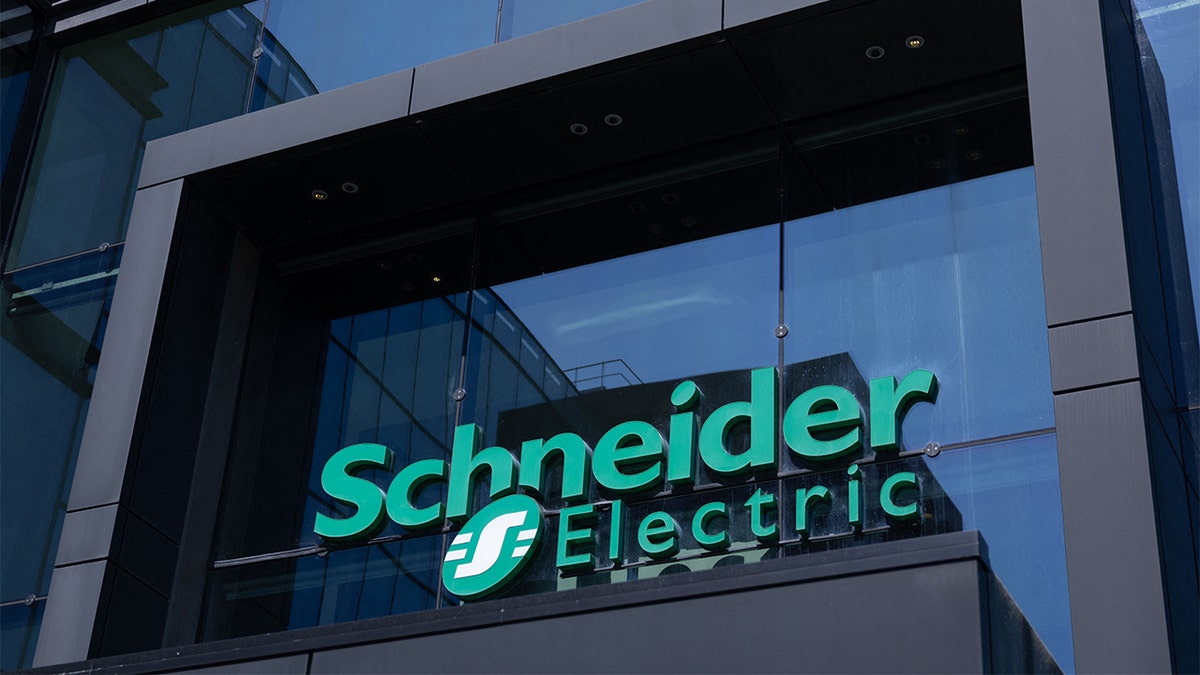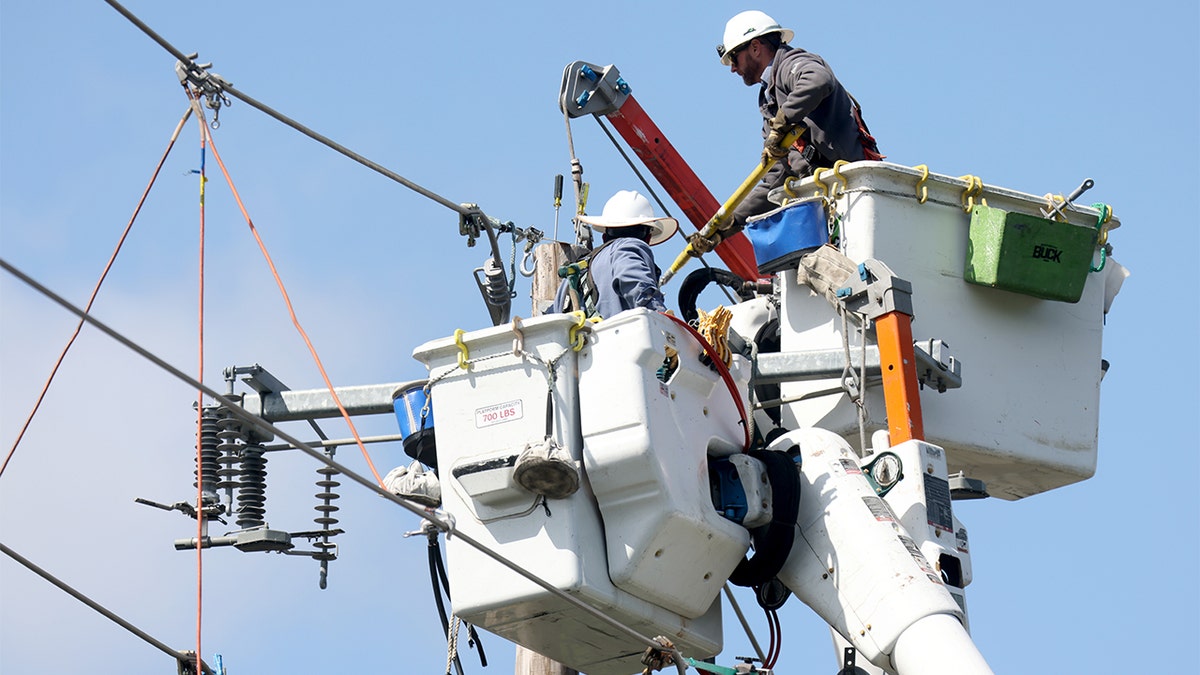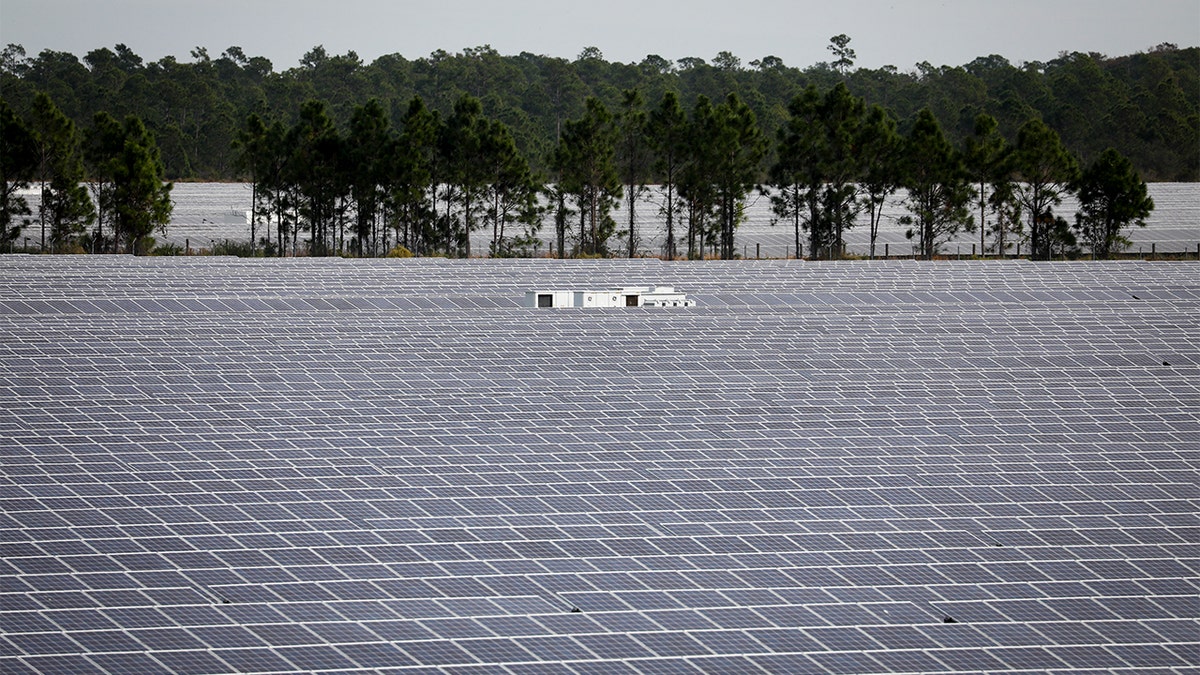Increasing number of microgrids in the US helps protect critical assets
Fox News anchor Bret Baier examines how infrastructure helps power communities on 'Special Report.'
The number of microgrids in the U.S. has increased by 11% in the last four years. Many are powered by new infrastructure and clean energy sources. They’re often used at facilities already connected to the grid but considered critical assets.
"Microgrids are a great way to counteract some of the risk that's associated with the infrastructure of the electrical grid," said James Potach, senior vice president of energy & sustainability services at Schneider Electric.
"It's also a great way to take advantage of several of the renewable energy resources that are coming online. Over time, though, we still need to increase our electric grid infrastructure to make it more reliable."
There are nearly 700 microgrids across the country, providing less than 1% of U.S. electricity and helping power everything from communities to restaurants and military bases.
US COMPANIES WORK TO RAMP UP DOMESTIC RARE EARTH MANUFACTURING

The Schneider Electric headquarters building. (Joel Saget/AFP via Getty Images)
"I think microgrids are very site specific," National Rural Electric Cooperative Association CEO Jim Matheson said. "They're really expensive. Three to 10 times more expensive than electricity from the grid. But in certain situations they really do make sense in terms of building in some reliability resilience for that specific location."
Schneider Electric has built hundreds of microgrids across the U.S. and overseas. It recently unveiled its microgrid at Yokota Air Base in Japan.
"The U.S. military recognizes that, ever since World War II, electrical grids have been identified as a prime target by enemy combatants," Potach said.
SOLAR COMPANIES ACCUSED OF TARGETING ELDERLY AMERICANS USING 'TROUBLING SALES PRACTICES'
The more than $400 million improvement project is one of the largest resiliency investments by the Defense Department. The microgrid helps Yokota generate its own electricity in emergency situations.
"It operates both in tandem with the electrical grid, and it can operate in what's called island mode, meaning it's totally independent of the grid when the grid goes down," Potach said. "Yokota Air Base is a strategic hub for the U.S. military across all of U.S. military operations in the Indo-Pacific region. So, the microgrid provided by Schneider safeguards them from the threat of power interruption. It gives them this shield of energy resilience."

Aerial view of a solar power microgrid. (Rachel Woolf for The Washington Post via Getty Images)
While the Yokota microgrid can operate on its own, grid operators and Schneider say it’s best to be connected to the main electric grid to operate at full capacity.
"It does provide a backup on resilience for special loads," Matheson said. "It makes sense to pay that extra expense to do that. They do have a role, but it's not going to solve our country's electric reliability situation across the board."
REPUBLICANS INTRODUCE RESOLUTION CONDEMNING UN AGREEMENT TO SHUT DOWN FOSSIL FUELS
Energy experts say infrastructure needs to be updated throughout the electric grid to ensure protection from bad actors or weather events.
"I think when you look at cybersecurity, for instance, you minimize the threat of a large-scale blackout or brownout when you have some of these microgrids, these more distributed sources of power that would prevent a bad actor from taking out a huge swath of the grid if they were successfully able to take out the interconnection," former Federal Energy Regulatory Commission Chairman Neil Chatterjee said.
"There are some definite benefits to this. But we have to proceed with caution to make sure we can pull it off in a way that doesn't compromise reliability and affordability."

Two electricians in California work during a power outage. (Jane Tyska/Digital First Media/East Bay Times via Getty Images)
In 2011, California experienced its largest power outage in history. Officials began exploring options for reliable energy sources.
"They realized how fragile their power grid was," Potach said. "They explored with Schneider Electric the use of large-scale renewable energy sources to safeguard their electrical power. That's really essential for base operations."
BIDEN ADMIN AIMS TO PUSH TOWNS, CITIES TO ADOPT GREEN ENERGY BUILDING CODES: 'VERY SUSPICIOUS'
The facility combines methane gas from a local landfill and solar power to back up the main power system. The company says the microgrid can power more than 100 mission-critical buildings on the base for up to 14 days.
"There was a point in 2020 where they were able to keep 2,000 homes in San Diego from actually going dark," Potach said. "It was during a period when the utility grid was really maxed out, and Miramar was able to produce their own energy to take a load or energy consumption off the grid, preventing a widespread outage. So, not just a benefit for the military, but there was obviously an impact for the community around the base."

A solar power energy microgrid in California. (Sandy Huffaker/AFP via Getty Images)
Remote microgrids in Alaska often operate independently. Some universities also operate without assistance from the electric grid. Even John F. Kennedy Airport’s TWA Hotel uses a microgrid system that’s isolated from the local utility.
"I think the isolated locations where they exist, in certain locations, it can help," Matheson said. "We need to build more large transmission lines and power generation that's always available."
BIDEN ADMIN FINALIZES MOST RESTRICTIVE OFFSHORE OIL DRILLING PLAN IN US HISTORY
Florida community Babcock Ranch is exploring adding microgrids in certain neighborhoods.
"There’s an opportunity to get as much of Babcock completely off the grid as possible," Babcock Ranch founder Sydney Kitson said.
Babcock Ranch is home to nearly 7,000 residents. The community includes schools, apartments, townhouses and retail centers. It’s all mostly powered by solar energy.

Solar panels in Florida. (Marco Bello/AFP via Getty Images)
"We actually were one of the first solar battery facilities in the country," Kitson said. "We were really almost like a living laboratory for these companies to come in and try their technologies."
The community is connected to Florida’s main power grid. It generates enough solar power to keep the lights on during the day and often stores additional output. At night, the community uses natural gas from Florida Power & Light when there is not enough solar energy stored.
CLICK HERE TO GET THE FOX NEWS APP
"I think one of the challenges that you're going to see, particularly for the scale of that 20,000 homes, would require a massive battery. So, we're hoping over time that that technology will be there, and it'll become more affordable," Kitson said. "We want to work with Mother Nature and not against Mother Nature, because it seems like every time you work against Mother Nature, you lose."
Babcock Ranch was put to the test during hurricane season in southwest Florida. The community sat in the eye of the storm during Hurricane Ian and came out with minimal damage.
"It was like a freight train running through my house for eight straight hours, but we never lost power. We never lost water service. We never had any kind of flooding," Kitson said. "We really proved that if you are resilient, you plan right in the beginning, that you can do it the right way."






















